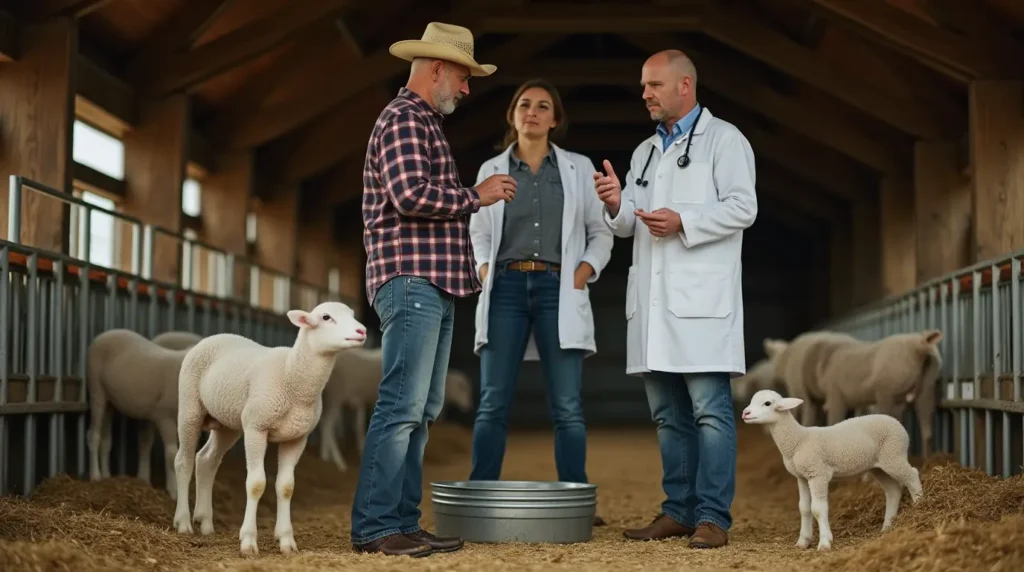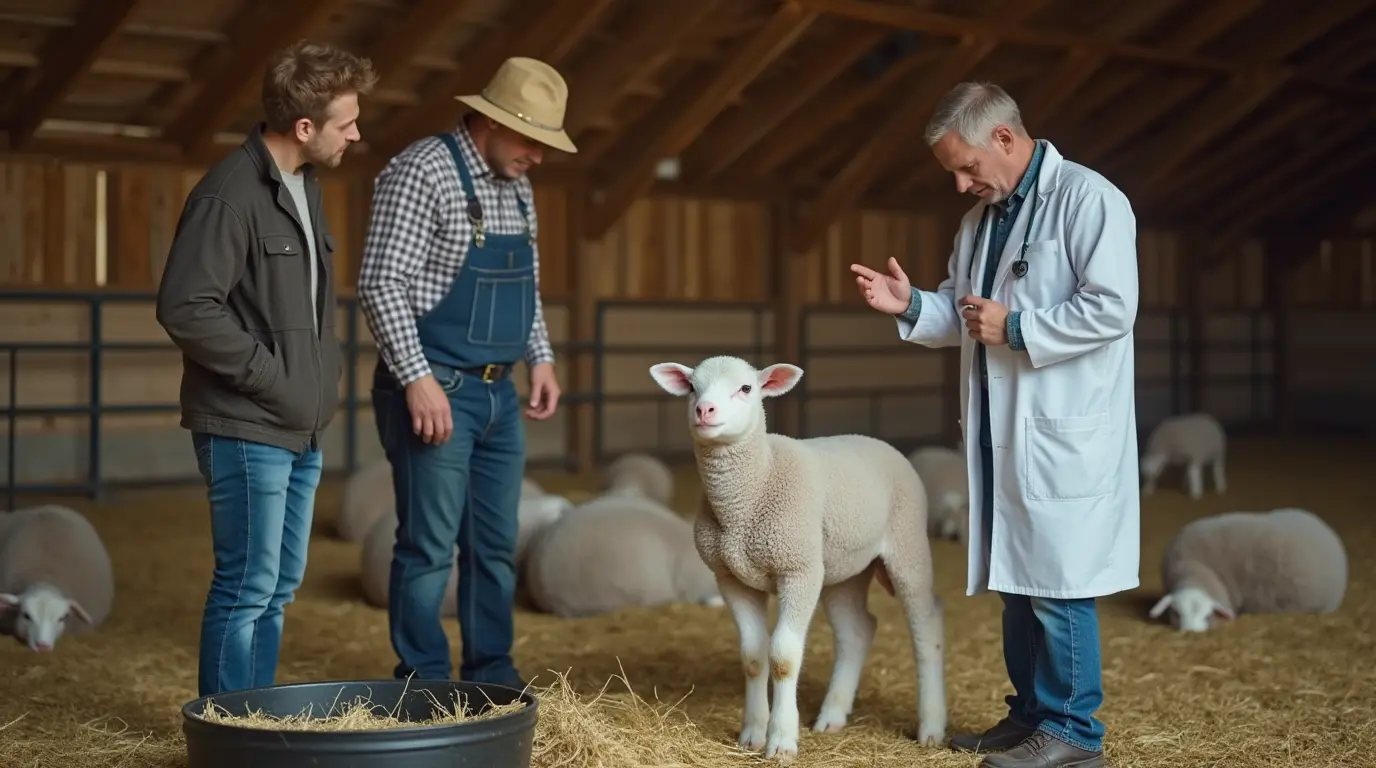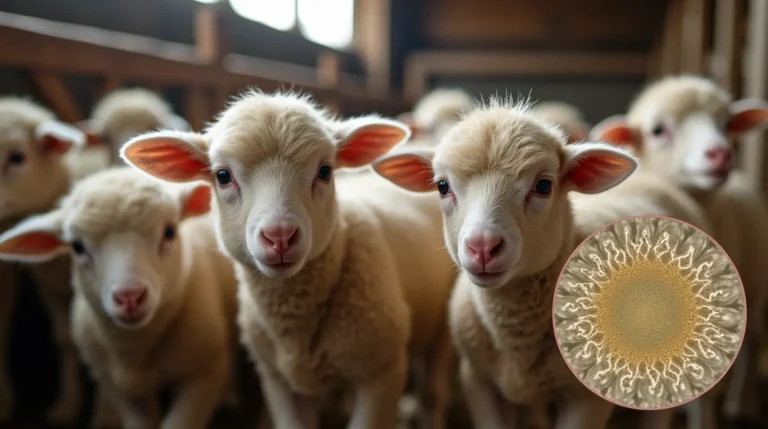Discover 7 critical early symptoms of Johne’s Disease in lambs and learn powerful strategies to protect your flock’s health and productivity.

Table of Contents
Sheep farming is a delicate balance of animal health, nutrition, and careful management. Among the most insidious challenges facing lamb producers is Johne’s Disease, a chronic and potentially devastating condition that can silently undermine the health and productivity of an entire flock. This comprehensive guide will dive deep into Johne’s Disease in lambs, equipping farmers and livestock managers with the critical knowledge needed to identify, prevent, and manage this complex bacterial infection.
What is Johne’s Disease?
Johne’s Disease, scientifically known as paratuberculosis, is a chronic inflammatory condition caused by Mycobacterium avium subspecies paratuberculosis (MAP). This bacterial infection primarily affects the intestinal tract, causing progressive and debilitating damage that can compromise an entire lamb’s digestive system and overall health.
The Silent Threat: How Johne’s Disease Spreads
Understanding the transmission of Johne’s Disease is crucial for effective prevention. The bacteria typically spread through:
- Contaminated fecal matter
- Infected milk or colostrum
- In utero transmission from infected ewes
- Shared feeding and watering equipment
7 Early Symptoms of Johne’s Disease in Lambs
1. Gradual Weight Loss Despite Normal Appetite
One of the most telltale signs of Johne’s Disease is persistent weight loss. Lambs may continue to eat normally, but their bodies cannot effectively absorb nutrients due to intestinal inflammation.
2. Chronic Diarrhea
Persistent, watery diarrhea that doesn’t respond to standard treatments is a red flag. The diarrhea is often intermittent in the early stages and becomes more consistent as the disease progresses.
3. Rough, Dull Coat Quality
A lamb’s coat can be an excellent health indicator. Infected lambs often develop a rough, lackluster coat that appears dry and lacks the typical sheen of a healthy animal.
4. Decreased Growth Rate
Stunted growth is a significant symptom of Johne’s Disease. Infected lambs will consistently fail to meet typical growth benchmarks for their age group.
5. Bottle Jaw (Submandibular Edema)
A swelling beneath the jaw, known as bottle jaw, can develop due to decreased protein production and compromised immune function.
6. Lethargy and Reduced Activity
Infected lambs often display decreased energy levels, showing less interest in grazing and social interaction compared to healthy flock members.
7. Intermittent Fever
Low-grade, recurring fevers can be an early indicator of the body’s immune response to the bacterial infection.
Diagnostic Approaches
Testing Methods
Veterinarians typically use several diagnostic techniques:
- Fecal Culture
- Blood Antibody Tests
- PCR (Polymerase Chain Reaction) Testing
- ELISA (Enzyme-Linked Immunosorbent Assay)
Prevention Strategies
Biosecurity Protocols
- Quarantine New Animals: Implement strict quarantine procedures for newly introduced flock members.
- Regular Testing: Conduct comprehensive herd testing annually.
- Hygienic Management: Maintain clean lambing areas and minimize fecal contamination.
Nutritional and Management Interventions
- Ensure clean, uncontaminated water sources
- Practice proper colostrum management
- Implement strict hygiene protocols during lambing
- Consider vaccination strategies recommended by local veterinary experts
Economic Impact of Johne’s Disease
The financial consequences of Johne’s Disease can be substantial:
| Impact Area | Potential Consequence |
| Reduced Productivity | 20-30% decreased lamb weight gain |
| Increased Veterinary Costs | Significant treatment and management expenses |
| Herd Replacement | Potential need for complete flock rehabilitation |
Recommended Products on Amazon
- Digital Livestock Scale
- Veterinary Diagnostic Test Kit
- Livestock Disinfectant Spray
- Professional-Grade Livestock Thermometer
Johne’s Disease in Lambs (FAQ)
Q: Can Johne’s Disease be completely cured? A: Currently, there is no complete cure. Management focuses on prevention and minimizing spread.
Q: How quickly does the disease progress? A: Progression varies, but symptoms typically become evident 2-5 years after initial infection.
Q: Is Johne’s Disease transmissible to humans? A: While controversial, some research suggests potential links to Crohn’s disease in humans.
Conclusion
Protecting your lamb flock from Johne’s Disease in lambs , requires vigilance, knowledge, and proactive management. By understanding early symptoms, implementing robust prevention strategies, and working closely with veterinary professionals, farmers can significantly mitigate the risks associated with this challenging condition.
Call to Action: Share your experiences with Johne’s Disease in the comments below, or consult with a local livestock veterinarian to develop a comprehensive prevention plan for your flock.





